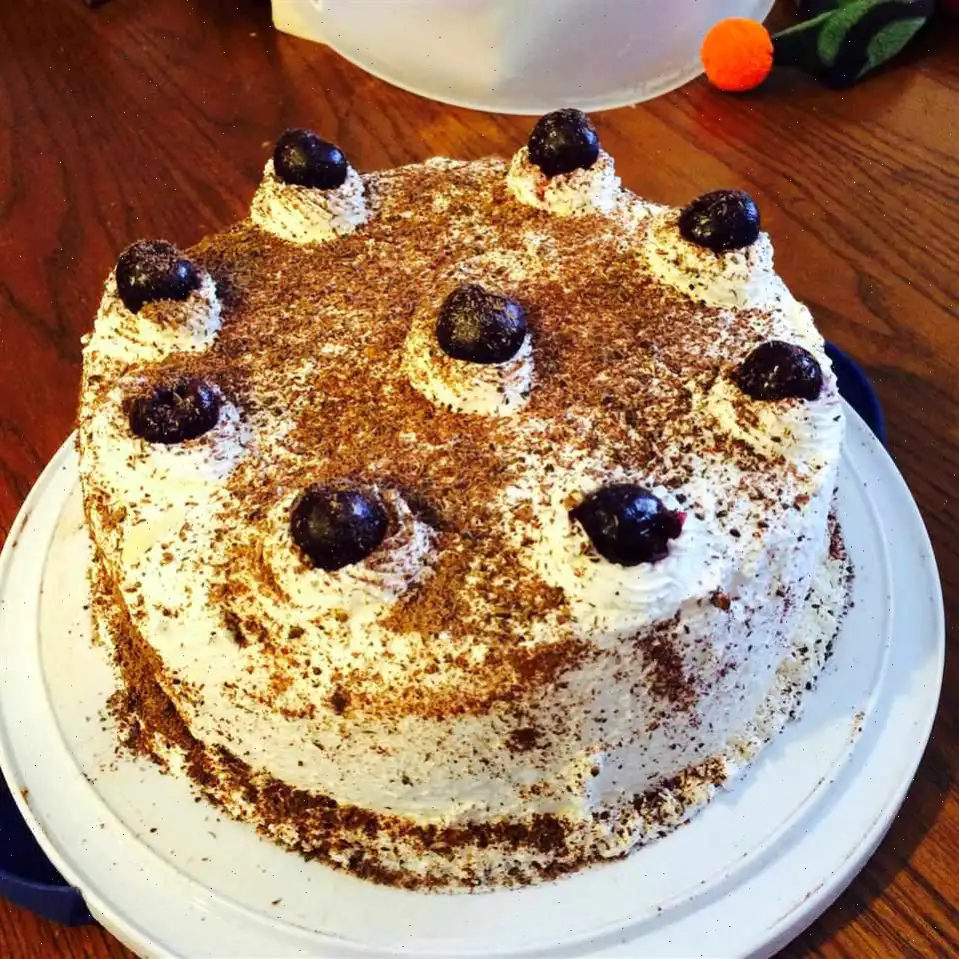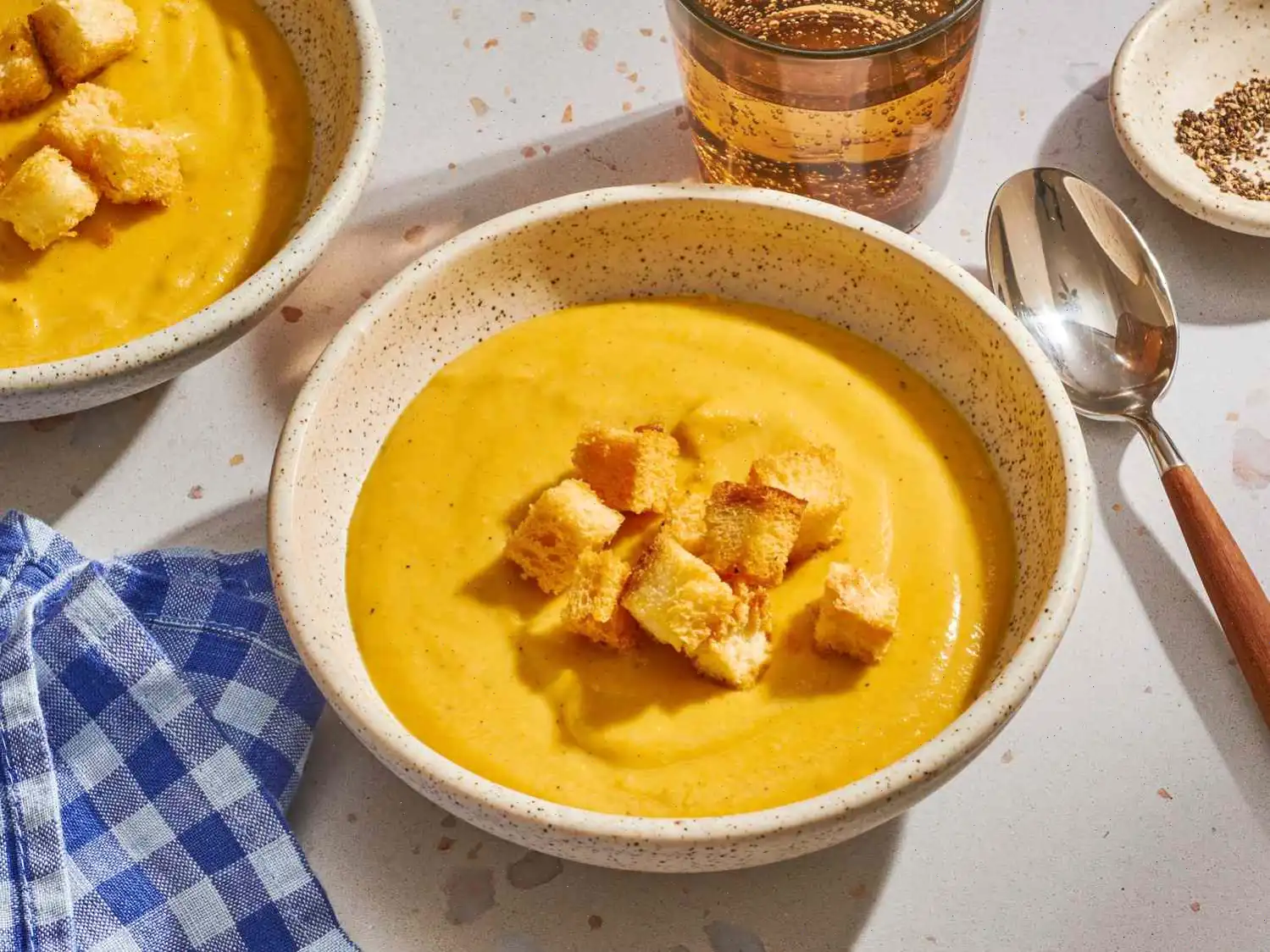
Knefla Soup II Recipe
Ingredients
This recipe yields 8 servings and was developed with the original portion sizes. Ingredient amounts are automatically adjusted, but cooking times and steps remain unchanged. Keep in mind that not all recipes scale perfectly.
- 1 cup all-purpose flour
- 1 egg
- cup water
- 1 pinch salt
- 1 large potato, diced
- 1 onion, diced
- pound bacon, chopped
- 3 cups milk
- 1 cup heavy cream
- Salt and pepper to taste
Directions
Follow these simple steps to prepare this delicious dish:
- Step 1: In a medium bowl, combine the flour, egg, cup water, and a pinch of salt. Stir together to form a dough. Once ready, cut the dough into thin strips or small pieces, depending on your preference.
- Step 2: Bring a large pot of water to a boil. Add the prepared dough, diced potatoes, and onions. Cook for about 20 minutes, or until the potatoes are tender. Drain the mixture.
- Step 3: While the pasta and potatoes are cooking, heat a large skillet over medium heat. Add the chopped bacon and cook until it becomes crispy. Be sure to save the bacon drippings for later use.
- Step 4: Return the cooked pasta and potato mixture to the large pot. Place it over medium-low heat and stir in the crispy bacon, a teaspoon of bacon grease, milk, and cream. Season with salt and pepper to taste. Adjust the amount of bacon grease as desired, and add more milk or cream if necessary to cover the ingredients.
- Step 5: Let the mixture simmer for 20 minutes, ensuring that it does not boil. Stir occasionally to keep everything well combined and heated through.
- Step 6: Serve the dish hot, and enjoy your creamy, hearty meal!
Nutrition Facts
Per serving:
- Calories: 386
- Total Fat: 26g (34% of daily value)
- Saturated Fat: 13g (63% of daily value)
- Cholesterol: 91mg (30% of daily value)
- Sodium: 297mg (13% of daily value)
- Total Carbohydrates: 27g (10% of daily value)
- Dietary Fiber: 1g (5% of daily value)
- Total Sugars: 5g
- Protein: 10g (20% of daily value)
- Vitamin C: 4mg (5% of daily value)
- Calcium: 140mg (11% of daily value)
- Iron: 1mg (7% of daily value)
- Potassium: 403mg (9% of daily value)
*Percent Daily Values are based on a 2,000-calorie diet. Your daily values may be higher or lower depending on your calorie needs.

Recipe by: Terri
Preparation time: 20 minutes | Cook time: 40 minutes | Total time: 60 minutes
History and Origins of Knefla Soup
Knefla Soup, often referred to as Knoephla or Kneufla, originates from the German-speaking regions of Europe, with a particular association to the Midwest of the United States. German immigrants brought the dish with them to the United States, where it became especially popular in areas such as North Dakota and Minnesota. The dish is a comforting, creamy soup made with egg noodles or dumplings, often combined with potatoes, bacon, and a rich broth. The word "knefla" is derived from the German word "Kndel," which refers to dumplings, highlighting the key ingredient of the soup: hearty, dough-based dumplings.
Regional Variations
Though the core recipe remains consistent, there are several regional variations of Knefla Soup. In North Dakota, for instance, it is a staple in German-American communities and often includes local ingredients such as thick-cut bacon and potatoes, making it an even heartier dish. In other parts of Germany and Central Europe, it is common to find Knefla Soup served as a starter before main courses, typically accompanied by rustic breads or rye rolls. The soup may vary slightly in terms of its creamy base, with some regions using a stronger stock or different meats like sausage instead of bacon.
Distinguishing Features of Knefla Soup
While Knefla Soup may share similarities with other European dumpling soups, it stands out due to its rich and creamy base made from milk and heavy cream. Unlike other soups that use a clear broth, the creamy texture is a hallmark of this dish, giving it a comforting, hearty quality. The homemade egg noodles or dumplings, often made fresh, contribute to the soup's distinctive texture, differentiating it from simpler noodle-based soups. Additionally, the addition of bacon provides a smoky richness that enhances the flavor profile, setting it apart from lighter soups like chicken noodle or potato soup.
Where Is Knefla Soup Typically Served?
Knefla Soup is most commonly served in home kitchens, particularly in German-American households, and is a favorite during colder months when a warm, filling dish is especially appreciated. In North Dakota, where the soup has cultural significance, it is often found at local gatherings, church potlucks, and community events. Its also a popular choice in family restaurants and diners that serve traditional German-American comfort food. Though not as widely known outside these regions, the soup remains a cherished dish among those with German heritage and is a go-to comfort food in many households.
Interesting Facts About Knefla Soup
- Knefla Soup has become a staple in the Upper Midwest, particularly in North Dakota, where it has earned a special place in the hearts of locals. In fact, its often considered a regional comfort food.
- The soups rich, creamy texture comes from the combination of milk, heavy cream, and bacon, making it especially filling and satisfying.
- In many versions of the recipe, the dumplings or egg noodles are made by hand, which adds an authentic, homemade touch to the dish. Some families have passed down their own variations of the dough recipe for generations.
- The dish is known for its versatility and can be adapted based on the availability of ingredients. While bacon is a common feature, other types of smoked meats or sausages can be used in its place.
- Knefla Soup is a great energy booster, making it a favorite among those who need to refuel after physical activities. Its often cited by marathon runners and athletes for its high-calorie content and ability to provide long-lasting energy.
FAQ about Knefla Soup II Recipe
Comments
John Garcia
07/31/2023 02:27:57 PM
If you're a marathon runner or engage in intense workouts, this meal offers a delicious and energizing source of fuel to keep you going strong.
Mary Lee
12/05/2022 12:42:22 PM
Absolutely adore this soup!! It brings me back to the days I lived in Fargo, North Dakota. This soup is a staple there. It's hearty, hot, and oh-so satisfying.
Christine Thompson
12/29/2023 03:19:09 PM
I absolutely adore this recipe that's been passed down from my grandmother. She never used to drain all the water off the potatoes, and I follow her lead because it adds so much flavor. Recently, I made this dish for a gathering, and my family and friends were blown away by how delicious it is. It truly is an exceptional comfort food.







